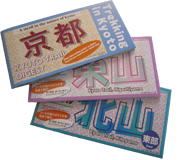Arts & Performances
Kyoto is a birth place of traditional arts, crafts and performances of Japan, and has been maintaining its tradition with the coming of the new age. Here GTK'd like to introduce the monthly art highlights, museums, creators etc.
Art Feature Vol.1
Ms. Mai Sato Lacquer crafts painter
Ms. Mai Sato paints the surface of the musical instruments such as several kinds of the Japanese drums for Imperial Court music, noh dramas etc. by lacquer paint. We'd like to introduce urushi, the traditional Japanese craft through her life as a craftsman.
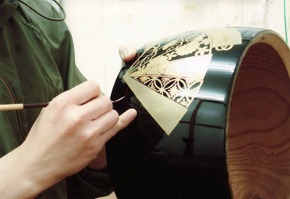
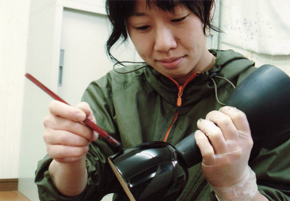
Q & A
- First, please tell us about urushi lacquer.
- Urushi is the material for painting made by the sap of urushi trees. It's said that the history of urushi dates back to the 3rd century B.C, and it has been distributed widely throughout Asian countries. Currently about 95% of the urushi sap used in Japan is extracted in China.
- What started you on urushi crafts ?
- I learned about urushi when I studied carpentry in Tokyo. I was really fascinated by its beauty, deepness and potential, and really wanted to learn more and be involved in the urushi world. What is the black color of urushi made from? It is a natural chemical change after mixing the iron powder with the urushi sap. The black color and its shine are definitely a natural effect. It's so magical and great, isn't it !
- Do you make urushi paint, too?
- No, I don't. Other people do.
The process in making urushi crafts is divided into a number of steps. When I go to the factory everyday, I usually clean every dust from the room to protect the urushi from collecting the dust. After painting, I put them into the dry room. I have to check the temperature and the humidity of the room. The appropriate temperature is around 20℃ and the humidity is 60~70%. Yes, a moderate humidity is needed to dry urushi. - Is it alright to bring the urushi crafts overseas, especially to countries that are drier than Japan?
- High quality urushi wares would have long lives in any situation.
And you don't need to think seriously about its maintenance. You can wash them by detergent, but please do it tenderly. And please wipe the water away. If you take care of urushi, their look would change to be your original treasure. Why don't you try to buy a small bowl? It's suitable for a soup bowl or a fruit basket. Urushi wares don't become very hot when you put hot soup into a bowl, and red cherry or strawberry in a black urushi bowl looks quite beautiful. - Thank you, Mai. Do you have any good shops for urushi crafts in Kyoto or any current information about urushi?
- OK!
I recommend you visit Kodai-ji Temple, located to the east of Gion, to see a famous Kodai-ji Makie.
(http://www.kodaiji.com/makie.html )
)
The annual outdoor noh performance on Jun 1st and 2nd called Kyoto Takigi-noh at Heian-jingu Shrine has a good chance to see a lot of traditional Japanese musical instruments, and its program is nice for foreign visitors. English program leaflet will be handed out.
Uruwashiya
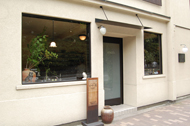
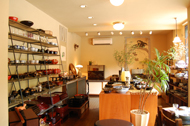
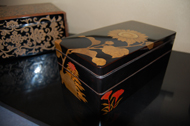
The antique urushi ware shop, Uruwashiya is the best shop, I think. You can enjoy various kinds of urushi crafts and be surprised by the elaborate paintings with gold lacquer. You could get only one antique urushi you like at a reasonable price.
View Art feature in a larger map
- Uruwashiya
- Nakagyo-ku Kyoto-city
- 11:00 ~ 18:00
- Closed on Tuesday
- 075-212-0043
- Highlights of Art
- Museum Information
- Art Feature

- Art Feature Vol.3
- Busshi

- Art Feature Vol.2
- English haiku poet

- Art Feature Vol.1
- Lacquer crafts painter
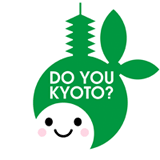
![]()


